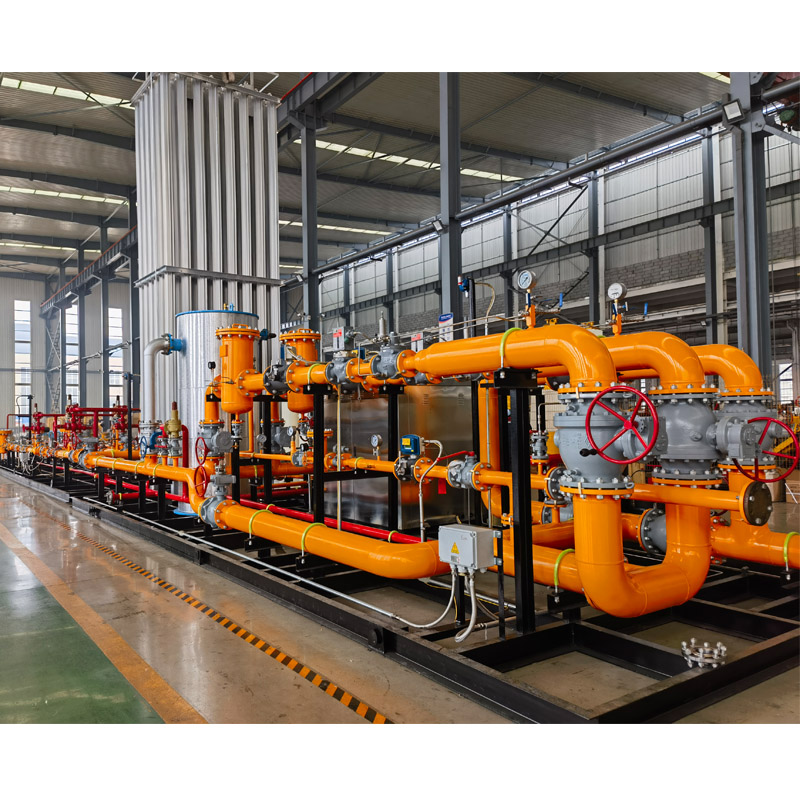
Dec . 23, 2024 07:10
Back to list
Innovative Pressure Regulation Skid Solutions for Efficient Fluid Management Systems
Pressure Regulating Skid An Essential Component in Modern Industrial Systems
In modern industrial systems, pressure regulation is a critical aspect that ensures the safety, efficiency, and reliability of operations. A pressure regulating skid is a specialized assembly designed to control and maintain the pressure of fluids in various applications, including oil and gas, chemical processing, water treatment, and many more. This article delves into the significance, components, and advantages of pressure regulating skids, shedding light on their indispensable role in contemporary industrial practices.
What is a Pressure Regulating Skid?
A pressure regulating skid is a modular framework that integrates various components such as valves, gauges, sensors, and control systems to manage fluid pressures within specified limits. Typically mounted on a single platform or frame, these skids facilitate ease of installation and maintenance while ensuring safe and efficient fluid transport.
Key Components of a Pressure Regulating Skid
1. Pressure Regulators These devices are the heart of the skid, designed to automatically adjust the flow of fluid to maintain a predetermined output pressure, regardless of variations in upstream pressure.
2. Valves Skids often incorporate a range of valves, including control valves and safety valves, that enable precise flow regulation and prevent overpressure situations.
3. Gauges and Sensors To monitor real-time pressure levels and provide feedback to the control system, pressure gauges and sensors are vital. These instruments ensure that operators can swiftly respond to any anomalies.
4. Control System Modern skids are often equipped with advanced control systems that utilize programmable logic controllers (PLCs) or distributed control systems (DCS). These systems allow for automation, enhancing operational efficiency by reducing manual monitoring.
5. Support Structure The skid itself, typically made of durable materials such as carbon steel or stainless steel, provides a robust platform that houses all components.
pressure regulating skid

Importance of Pressure Regulating Skids
1. Safety One of the most critical roles of a pressure regulating skid is safety. Overpressure conditions can lead to catastrophic failures in industrial systems. By maintaining pressure within safe limits, these skids significantly reduce the risk of accidents and equipment damage.
2. Efficiency In industrial operations, maintaining optimal pressure contributes to efficient processes. Pressure regulating skids help achieve consistent performance, reducing energy consumption and enhancing the overall efficiency of the system.
3. Flexibility Pressure regulating skids are highly versatile, allowing for easy customization to meet specific operational needs. Whether used in gas distribution, refinery operations, or wastewater management, these skids can be tailored for various fluids, pressures, and flow rates.
4. Cost-Effectiveness By optimizing pressure control, skids can mitigate issues related to equipment wear and tear, leading to lower maintenance costs and extended equipment lifespan. This cost-effective nature contributes to a better return on investment for industrial operators.
Applications of Pressure Regulating Skids
Pressure regulating skids are utilized across various sectors, including
- Oil & Gas Ensuring safe and consistent pressure levels during extraction, processing, and transportation of hydrocarbons. - Chemical Processing Regulating pressures in reactors and pipelines to maintain optimal operating conditions. - Water Treatment Controlling pressures in treatment plants to ensure efficient filtration and distribution. - Pharmaceuticals Maintaining precise pressure levels during production processes to ensure product quality and compliance with regulatory standards.
Conclusion
In summary, pressure regulating skids play a pivotal role in maintaining safe and efficient industrial operations. With their robust design and advanced technology, these skids not only enhance safety and operational efficiency but also provide flexibility and cost savings. As industries continue to evolve and demand greater reliability and performance from their systems, the importance of pressure regulating skids will only increase, solidifying their status as essential components in the modern industrial landscape.
Latest news
-
Safety Valve Spring-Loaded Design Overpressure ProtectionNewsJul.25,2025
-
Precision Voltage Regulator AC5 Accuracy Grade PerformanceNewsJul.25,2025
-
Natural Gas Pressure Regulating Skid Industrial Pipeline ApplicationsNewsJul.25,2025
-
Natural Gas Filter Stainless Steel Mesh Element DesignNewsJul.25,2025
-
Gas Pressure Regulator Valve Direct-Acting Spring-Loaded DesignNewsJul.25,2025
-
Decompression Equipment Multi-Stage Heat Exchange System DesignNewsJul.25,2025

